Risk
The CALP Network’s State of the World’s Cash report found that the perception that CVA is riskier than other forms of aid was one of the main barriers to CVA being routinely used. This concern is linked to the growing emphasis from donors on anti-terrorism and money laundering, and shrinking budgets for humanitarian assistance. The CALP Network’s work under this theme aims to debunk myths, facilitate collaboration, and share learning to ensure that CVA is systematically and equally considered, based on evidence of actual risks across modalities.
Current priorities
A variety of organisations are currently working on CVA and risk. The CALP Network is working to identify synergies among actors, avoid duplication, and define joint priorities that can be better addressed collectively. Together with WFP, the CALP Network is co-leading the risk priority within the Grand Bargain workstream on cash.
Featured content

Podcast: Will risk aversion hold us back from realizing the potential of CVA?
Podcast
Episode 1 of the CashCast, exploring how attitudes to risk have impacted the use of CVA in the Middle East and North Africa region.

CVA and Risks: What happens in the field, stays in the field?
Blog Post
In October 2019 in Douala, Cameroon, the CALP Network facilitated a learning event exploring the risks to beneficiary protection in Cash and Voucher Assistance (CVA). This closed-door workshop, held as part of series of meetings and webinars on theme of CVA and risk in different regions, convened 25 humanitarian workers from West and Central Africa representing local and international NGOs, UN...

Webinar: Data sharing in CVA: ethics, ownership and privacy
Event
Thematic lead
Latest
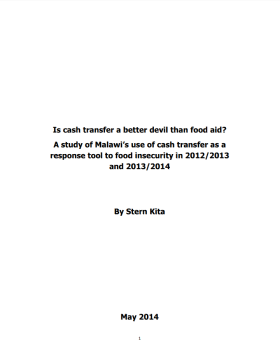
Is Cash Transfer a Better Devil than Food Aid? A study of Malawi’s use of cash transfer as a response tool to food insecurity in 2012/2013 and 2013/2014
Report
The 2004 Indian Ocean Tsunami is considered as the first humanitarian situation where cash transfers were used as an alternative to food aid. Since then, cash transfers have been used as a standalone response tool to disasters, or used in combination with food aid. Malawi piloted the use of cash...
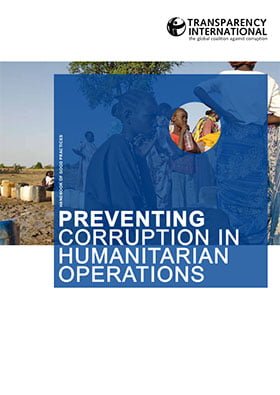
Preventing Corruption in Humanitarian operations
Guidelines and Tools
Transparency International (TI) has long held that the most damaging impact of corruption is the diversion of basic resources from poor people. Corruption in humanitarian aid is the most egregious form of this, as it deprives the most vulnerable poor people, the victims of natural disasters and civil...
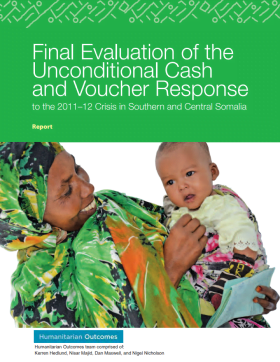
Final Evaluation of the Unconditional Cash and Voucher Response to the 2011–12 Crisis in Southern and Central Somalia
Report
This report sets out to determine the effectiveness of the unconditional cash and voucher interventions in southern and central Somalia. This evaluation however cannot be limited to the interventions at hand. It necessarily considers the broader context that led to the failure of the humanitarian...

Communications Technology and Humanitarian Delivery – Challenges and Opportunities for Security Risk Management
Report
The articles contained in this publication are dispatches from a new frontline in humanitarian action: the digital frontier. All are written by those observing, experiencing and attempting to respond to the challenges created by the digital revolution and the very real threats it is creating for...
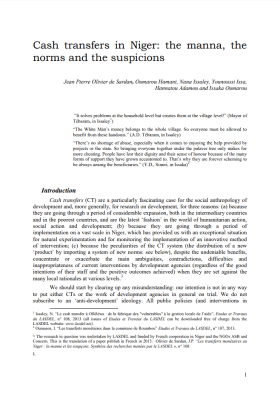
Cash transfers in Niger: The manna, the norms and the suspicions
Report
Cash transfers (CT) are a particularly fascinating case for the social anthropology of development and, more generally, for research on development, for three reasons: (a) because they are going through a period of considerable expansion, both in the intermediary countries and in the poorest countries,...
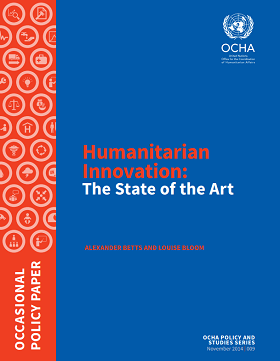
Humanitarian Innovation: The State of the Art
Policy paper
The humanitarian system faces grave challenges, as record numbers of people are displaced for longer periods by natural disasters and escalating conflicts. At the same time new technologies, partners, and concepts allow humanitarian actors to understand and address problems quickly and effectively....

The CALP Network Level 2 Training – Module 3 – Selecting, designing and implementing CTPs
Guidelines and Tools
The objective of the Level 2 training is to strengthen the capacity of humanitarian actors in cash transfer programme design and implementation, to share recent research and learning, and encourage advocacy, institutionalisation and coordination in cash transfer programming (CTP). This training follows...

Cash Transfers and HIV Prevention
Report
This paper proposes some initial principles on how to optimize HIV impacts of cash transfers, by encouraging targeting that: focuses on communities with high rates of new HIV infections, particularly acquired via sexual transmission; reduces local or community levels of economic inequalities between men...
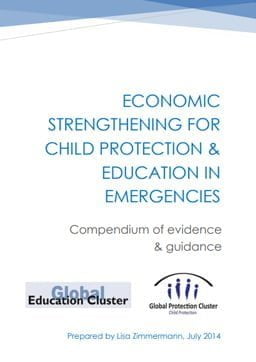
Economic Strengthening for Child Protection & Education in Emergencies
Guidelines and Tools
The aim of this compendium is to provide education and child protection coordinators and partners working in the field who are involved in or confronted with economic strengthening programmes with key existing evidence and guidance documents in order to inform their work, at all stages of a programme...

A Double-edged Sword: Livelihoods in emergencies guidance and tools for improved programming
Guidelines and Tools
This document aims to help economic development practitioners who design economic strengthening projects with the particular aim of improving child wellbeing and for others whose aim is poverty alleviation more broadly. The guidance presented is based on the understanding that: 1. Household economic...
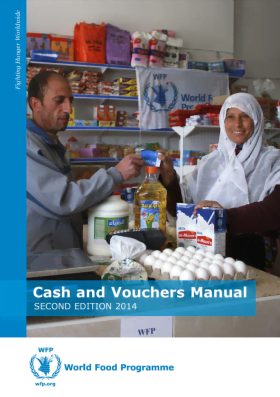
Cash and Vouchers Manual – Second edition
Guidelines and Tools
This second edition of the Cash and Vouchers Manual captures the latest corporately endorsed business processes and procedures, providing the most up-to-date tools (i.e. analytical, assessment, monitoring) that have been developed through close intra-departmental collaboration between Headquarters...

Protecting Beneficiary Privacy: Principles and Operational Standards for the Secure Use of Personal Data in Cash and e-transfer Programmes
Guidelines and Tools
The use of electronic transfers (e-transfers) in cash transfer programming has grown in the humanitarian sector and is increasingly recognised as an effective and efficient intervention in certain emergency contexts. Following recommendations made by a CALP research in 2011 on e-transfers ‘New...

E-transfers in Emergencies: Implementation support guidelines
Guidelines and Tools
Electronic transfers, or e-transfers, are a form of value transfer that relies on digital payment systems. The great many benefits they can realise for aid recipients and aid agencies alike in terms of increased security, convenience, privacy, speed, reduced operational/transaction costs and logistics,...
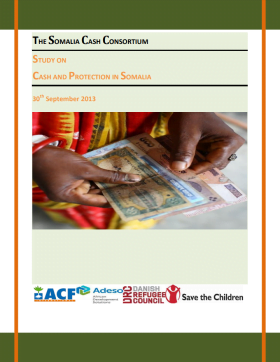
Study on Cash and Protection in Somalia
Report
The worst drought to hit Somalia in 60 years happened in 2011 and came to be popularly known as ‘The Horn of Africa Hunger Crisis’. The drought happened in a context of active conflict and a weak government that could neither protect its citizens nor the humanitarian actors. The Somalia Cash...

NGO and Donor Consultations on Results-Based Protection
Presentation
InterAction carried out a series of two-hour consultations from November 2012 to March 2013. The consultation process explored aspects of results based protection by engaging agencies in a discussion on how they understand and measure protection. A total of 26 consultations took place that included...
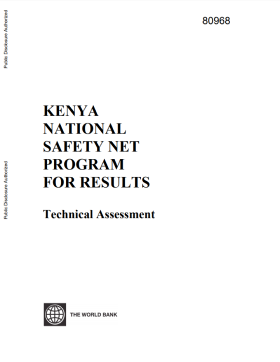
Technical Assessment of the Kenya National Safety Net Program for Results
Report
One of the priorities outlined in the National Social Protection Policy (NSPP) in Kenya, is the government’s ambition to enhance social assistance by developing the necessary institutions and strengthening operational systems while expanding the coverage of such programmes. To help realise this policy...
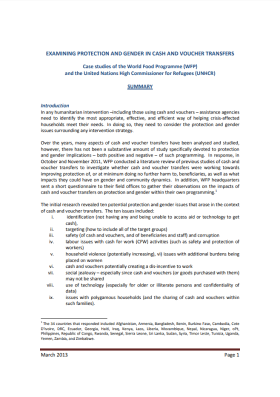
Examining Protection and Gender in Cash and Voucher Transfers – Summary
Report
In any humanitarian intervention – including those using cash and vouchers – assistance agencies need to identify the most appropriate, effective, and efficient way of helping crisis-affected households meet their needs. In doing so, they need to consider the protection and gender issues surrounding...
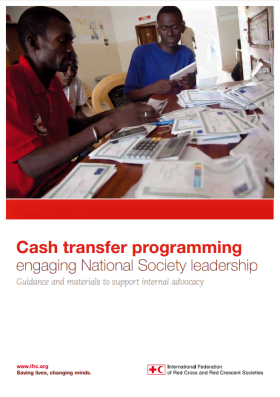
Cash Transfer Programming Engaging National Society Leadership: Guidance and materials to support internal advocacy
Guidelines and Tools
This guidance provides the materials required to run an awareness session for senior representatives of a National Society on the nature of cash transfer programming, its challenges and benefits. National Societies work in different contexts and as such the materials will need to be adapted to suit the...
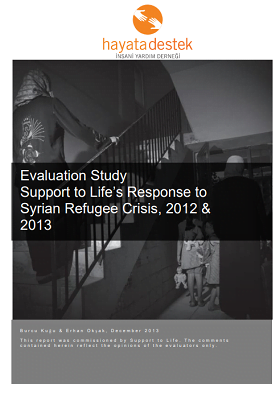
Evaluation Study Support to Life’s Response to Syrian Refugee Crisis, 2012 & 2013
Report
This report is part of enhancing Support to Life’s organisational learning on its Syrian Refugee Programme in Turkey. The specific objective of the evaluation is to present the findings on the achievements, quality and overall impact of Support to Life’s humanitarian response of the Syrian refugee...
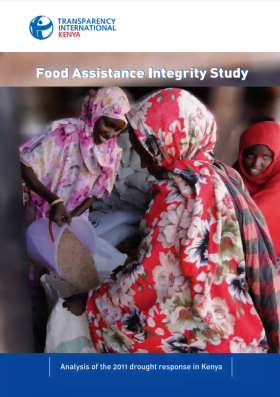
Food Analysis Integrity Study: Review of the 2011 drought response in Kenya
Report
Using four case studies from the 2011 drought response in Kenya, the Food Assistance Integrity Study by Transparency International Kenya analyses the impact of diversion and corruption on different types of food assistance. The study aims to enhance the accountability, efficiency and cost effectiveness of...



